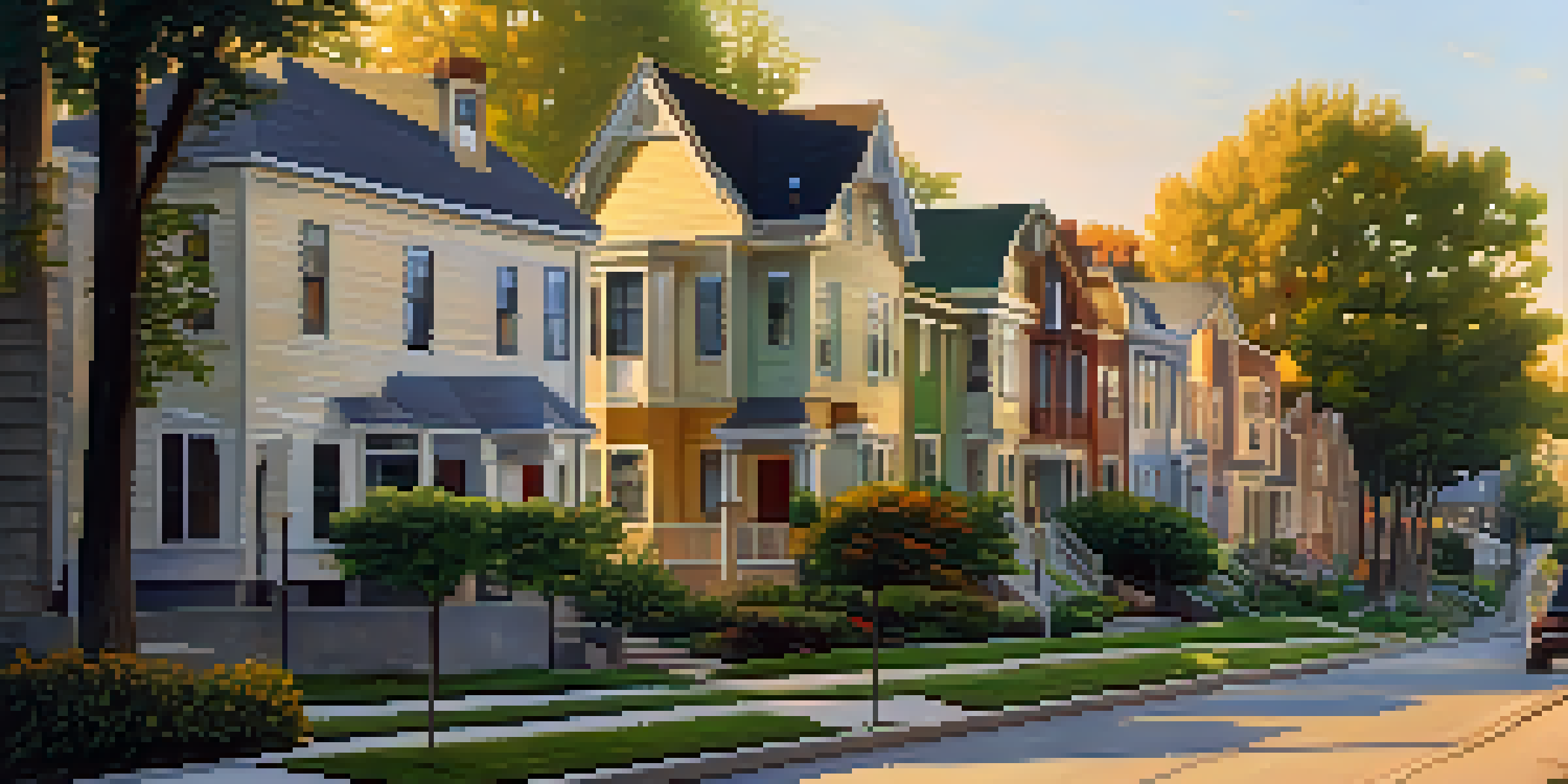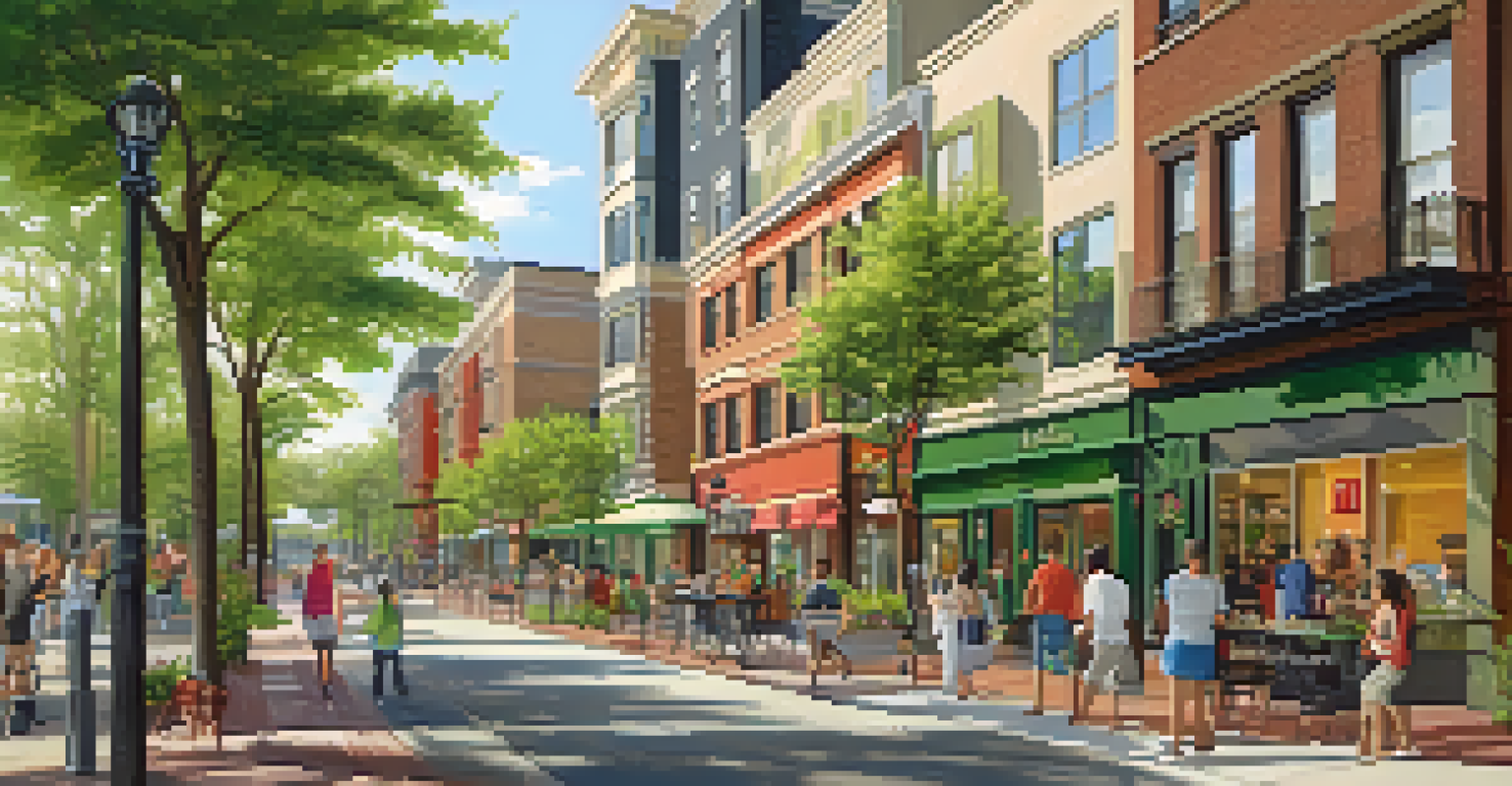Zoning Laws and Community Planning: A Delicate Balance

Understanding Zoning Laws: What They Are and Why They Matter
Zoning laws are regulations set by local governments that dictate how land can be used in specific areas. They can designate zones for residential, commercial, industrial, and agricultural purposes, playing a crucial role in shaping our communities. By establishing these guidelines, zoning laws aim to prevent land-use conflicts and enhance the quality of life for residents.
Zoning laws are not just about land use; they're about the quality of life in our communities.
Imagine a neighborhood where a factory suddenly opens next door to a quiet home—chaos would ensue! Zoning laws help avoid such scenarios by keeping incompatible land uses apart. They create a structured environment where businesses can thrive while maintaining residential peace, ultimately benefiting the community as a whole.
However, zoning laws are not without controversy. They can sometimes limit property owners' rights and stifle development, making it essential for local governments to strike a balance between regulation and freedom. Understanding zoning laws is vital for anyone involved in community planning or real estate.
The Role of Community Planning in Shaping Our Environment
Community planning involves creating a vision for a neighborhood or city to ensure sustainable growth and development. It considers factors like housing, transportation, parks, and public services, aiming to create an integrated and functional community. Planners work with local governments, businesses, and residents to develop strategies that meet the needs of all stakeholders.

Think of community planning as a blueprint for building a neighborhood, much like an architect designs a house. It requires careful consideration of how different elements interact with each other to create a cohesive and vibrant environment. By focusing on long-term goals, community planning helps ensure that areas remain livable and appealing over time.
Zoning Laws Shape Community Life
Zoning laws establish regulations that dictate land use, preventing conflicts and enhancing the quality of life in neighborhoods.
Incorporating public input is a crucial aspect of effective community planning. Engaging residents in discussions about their wants and needs fosters a sense of ownership and pride, ultimately leading to more successful outcomes. When communities collaborate on planning efforts, they can create spaces that genuinely reflect their values.
The Delicate Balance: Zoning Laws and Community Needs
Striking a balance between zoning laws and community needs is an ongoing challenge for planners and local officials. While zoning laws aim to maintain order and predictability, community needs can evolve rapidly, often outpacing existing regulations. This tension can lead to frustration among residents, especially when they feel their voices are not being heard.
Community engagement is the cornerstone of effective planning; without it, we risk losing sight of the very people we serve.
Consider a growing neighborhood where more housing is desperately needed. If existing zoning laws are too rigid, they may hinder the construction of affordable homes, leaving families struggling to find suitable places to live. Planners must adapt zoning regulations to accommodate growth while still protecting the community's character.
Ultimately, the goal is to create zoning laws that are flexible enough to respond to changing needs while providing a framework for sustainable development. Ongoing dialogue between community members and planners is essential to achieving this balance, fostering an environment where everyone feels included and valued.
The Impact of Zoning Laws on Affordable Housing Initiatives
Affordable housing is a pressing issue in many communities, and zoning laws can significantly impact its availability. Strict zoning regulations can restrict the types of housing that can be built, limiting options for lower-income families. In contrast, more flexible zoning can encourage the development of diverse housing types, such as duplexes or accessory dwelling units.
Imagine a neighborhood where zoning laws only allow single-family homes. This restriction can drive up property prices, making it difficult for families to afford housing. By reforming zoning laws to accommodate various housing options, communities can create more inclusive environments where everyone has a chance to thrive.
Planning Requires Community Input
Effective community planning thrives on public engagement, ensuring that resident needs and desires shape the development of their environment.
Addressing the affordable housing crisis requires collaboration between local governments, developers, and community members. By working together to revise zoning laws, stakeholders can create innovative solutions that promote economic diversity and ensure that all residents have access to quality housing.
Environmental Considerations in Zoning Laws and Planning
As communities grow, environmental sustainability has become a critical consideration in zoning laws and community planning. Planners must balance development with the need to protect natural resources, such as parks, wetlands, and wildlife habitats. Incorporating green spaces into zoning regulations can enhance community well-being and foster a connection to nature.
Think of zoning laws as a way to create a protective shield around our environment. By setting aside areas for conservation and limiting development in ecologically sensitive zones, communities can preserve their unique landscapes for future generations. This approach not only benefits the environment but also enhances the quality of life for residents.
In recent years, there has been a growing movement to incorporate sustainability into zoning laws, such as encouraging mixed-use developments or promoting public transportation. By embracing eco-friendly practices, communities can create vibrant spaces that support both economic growth and environmental stewardship.
The Future of Zoning Laws: Trends and Innovations
The landscape of zoning laws is constantly evolving, with new trends and innovations emerging to address the challenges of modern communities. One notable trend is the movement towards form-based codes, which focus on the physical form and design of buildings rather than strictly regulating land use. This approach encourages more creative and context-sensitive development.
Imagine walking through a neighborhood where buildings complement each other, creating a harmonious streetscape. Form-based codes can help achieve this vision by allowing for a mix of uses and architectural styles that enhance the overall character of an area. This flexibility can lead to more vibrant and engaging public spaces.
Balancing Growth and Regulation
Finding a balance between adaptable zoning laws and evolving community needs is essential for sustainable development and affordable housing.
Another innovation gaining traction is the integration of technology in planning processes. Online platforms for public engagement and data analysis can help streamline communication among stakeholders, making it easier to gather feedback and adapt zoning regulations. As communities continue to evolve, embracing these trends will be essential for effective and responsive planning.
Community Engagement: Key to Successful Zoning and Planning
Effective community engagement is vital for successful zoning laws and planning initiatives. When residents feel heard and involved in the decision-making process, they are more likely to support and embrace the outcomes. Planners must prioritize transparency and communication to foster trust and collaboration among community members.
Think of community engagement as building a bridge between planners and residents. By hosting public meetings, surveys, and workshops, planners can gather valuable input and insights from those who know the community best. This collaborative approach not only empowers residents but also leads to better planning outcomes that reflect the community's desires.

Ultimately, community engagement is about creating a shared vision for the future. By involving residents in the planning process, communities can work together to establish zoning laws that balance individual property rights with the collective good, ensuring a more harmonious and thriving environment for all.